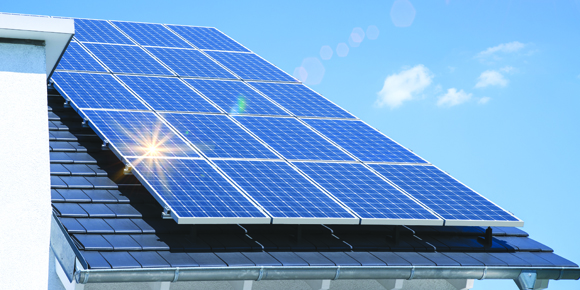Solar electric power has become a hot topic in Manitoba as more efficient and cost-effective PV or photovoltaic panels hit the market.
The solar revival is also due to Manitoba Hydro’s incentive of $1 per watt to anyone who installs a system with a minimum output of one kilowatt to a maximum of 200 kilowatts (one kilowatt equals 1,000 watts).
The incentive is available to residential, commercial and industrial customers, according to a spokeswoman for Hydro’s Power Smart Program.
In this column, I’m going to examine the pros and cons of a PV system to power an average-size 1,500-square-foot house year-round, including lights, heat, air conditioning, water, appliances and any other modern electrical amenities you can name.
Pros:
Photovoltaic sun energy is considered a “green” source of power (though the panels are filled with chemicals).
Installing a PV system is a way to hedge against hydro rates doubling or tripling.
Tier One PV panels (the best and most expensive) have a lifetime expectancy of 25 years.
Pay back time can be as little as 10 years, depending on hydro rates and whether an on-grid or off-grid system is installed.
In some cases, excess power can be sold to Manitoba Hydro or exchanged for a credit, although the utility prefers a “zero balance” system.
For city installations, a solar array can be mounted on a south facing roof for optimum electrical output. (East or west facing arrays produce less power, but are still viable.)
People in rural areas with sufficient land can set up an array on the ground.
Cons:
Manitoba has one of the coldest continental climates in the world and receives an average of only 4.2 peak hours of sunlight in a year. This is nearly twice as much as Germany where solar installations are common. However, the cost of a kilowatt of electricity in Germany is nearly four times the eight-cent per kilowatt cost in Manitoba, making PV solar a cost-effective alternative in Germany, but not here at present.
In Manitoba, sunlight is scarce in the three coldest months (December, January and February). Therefore, electricity must be stored in batteries (off-grid system) during peak summer times or sourced from Manitoba Hydro during the coldest months (on-grid system).
Off-grid systems are not recommended unless the location is a long distance from a hydro pole. The main problem with off-grids is they require a bank of deep-cycle, lead-acid storage batteries that cost about $250 each, last five years, are not “green” and require maintenance.
On-grid systems are less expensive to install (no batteries required), however, when there is a hydro outage an on-grid array will shut down, too.
PV panels are rated as Tier One, Two or Three — with Tier One being the best. Top-rated panels are also the most expensive with an expected lifetime of about 25 years. If lesser quality panels are installed, their lifetime may expire before the payback time of an installation is reached.
Although some newer panels are built to resemble roofing material, a PV array on a roof reduces a home’s curb appeal and, likely, resale value, unless the buyer is a latter-day hippie.
Removing snow from a roof-mounted array is required to maintain peak efficiency. If a homeowner is not prepared to do this job, then he should factor in the cost of yearly snow removal by someone else.
Shade can seriously reduce the output of PV panels — trees may need to be removed.
If you install panels today, you may miss out on newer and better technology in the future.
To install or not to install?
The following figures compare the cost to install a PV system versus the options of investing your money at four percent or, if you don’t have cash to invest, continuing to use Manitoba Hydro to power your house for the next 12 years.
A 1,500-square-foot, all-electric home consumes about 30,000 kilowatts per year. (This estimate is high to take into account the rising cost of Hydro rates over 12 years.)
The cost to install a turn-key photovoltaic on-grid system using the best equipment is about $2.50 per kilowatt or 30,000 kilowatts x $2.50 = $75,000, minus a Hydro rebate of $30,000, for a total cost of $45,000.00
If you borrowed $45,000 at seven per cent compounded over 12 years to build a PV system, your monthly payments would be approximately $462 per month x 144 months for a total of $66,630 to finance the installation.
If you had $45,000 in cash and invested it at four per cent compounded over 12 years, you would have $57,600 at the end of the term.
If you chose to remain a Hydro customer, you would pay $2,400 x 12 years, or $28,000, to heat, air condition and operate all the gadgets in your home, minus the hassle of a PV system.
Final word: I’m not one to tell other folks what to do, but as a DIY back-to-the-lander I’ve had experience with generating electricity with solar panels, and I don’t care how highly Mother Earth News lauds new PV systems. You know why? Because in this province we have the second cheapest electricity rates in the world, and I’m too old to shovel snow off an array of panels in the midst of a freezing Manitoba winter.



